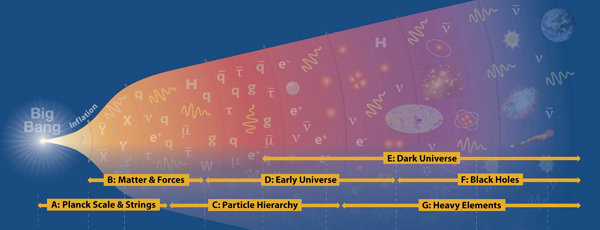What processes drive the building of the visible structures in the Universe?

- Active galaxy M87 (HST): A matter-swallowing black hole creates the enormous brightness of this galaxy. // © J. A. Biretta et.al, Hubble Heritage Team (STScl/AURA), NASA
Billions of galaxies exist in the Universe. They differ greatly in appearance, size, composition and age. But however different they are, every galaxy’s center hosts a supermassive black hole - and fascinating things are going on within every galaxy: New stars are born by gravitational collapse from cold, dense gas clouds. Throughout their lifetime they cast large parts of their newly formed matter back into space with stellar winds and in the end during a supernovae. In turn, the ejected matter forms new clouds of matter from which chemically enriched new stars are born and new planets emerge from the dust disks surrounding these stars.
These processes are driven by gravity. But the galactic development is dominated by a mass with an unknown nature, which is therefore called "dark matter": Galaxies form within giant spherical areas of dark matter, the so-called halos. In turn, these halos were created by the accumulation of dark matter from within the cosmos and through mergers with other halos. Based on observations, models and simulations, the researchers know that the great variety of different galaxies can be explained by their development over cosmic time periods: A galaxy typically grows very slowly by absorbing the gas streams of the cosmic environment. Very rarely it merges with another large galaxy, thus suddenly gaining a lot of matter.
Galaxies are the result of complex physics. The awareness that a supermassive black hole is located in every galaxy is still relatively new. Only recently, astronomers have observed that there are strong correlations between the mass of a black hole and the properties of the surrounding galaxy. Therefore, the scientists in Research Area F aim to develop a better understanding of the cosmic evolution of galaxies and the connection between the formation of a galaxy and its supermassive black hole as well as the formation of stars and planets.





